 Indians Archive
Indians Archive  Reality Setting In on A Lazy Sunday
Reality Setting In on A Lazy Sunday
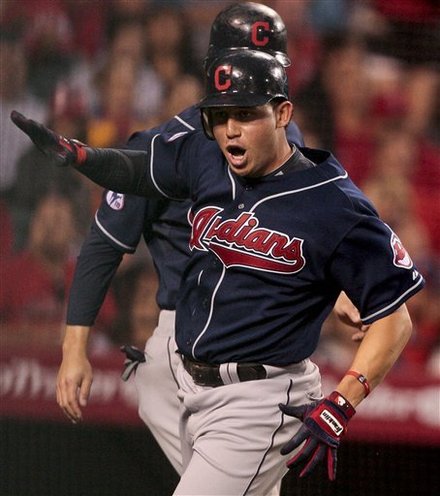
With the Indians now closer to that “magical” 40-game threshold – where assertions about a season can be made with some certainty – than they are to completing merely 20 games – when “it’s still early” is seemingly the introduction to every sentence or paragraph – perhaps a new reality is setting in for the Indians. By “reality”, I don’t mean that they’re being exposed as a early season mirage – a flawed team ready to crash back down to Earth, in that there was this intimation from some corners that the “reality” of what the Indians are was eventually going to catch up to them and slap them with a right-cross, perhaps leading to a nosedive to the mat…or at least down the AL Central standings.
While that may still be coming (there’s that qualifier) for the Tribe, the way that the Indians have played over a 32-game stretch to begin the season, the “reality” that is setting in is one that has the Indians in this for the long haul in 2011. To wit, they’re 3-2 on this West Coast trip against the top two pitching staffs in the AL thus far and whether a June swoon is coming or not, this Indians team has showed that it can win in different ways and both at home and on the road. Though most nationally and locally still speak of the Indians’ season in exasperated tones and with their voices raising at the end of each sentence, the MLB season is now a week into May and a “hot start” has evolved into growing confidence that this is who the Indians are as a team in 2011.
That “reality” may not be the one that we were expecting to hit us in the face, but it’s just as jarring to realize as the Indians are seemingly in every game, bashing their way past pitchers they’re supposed to crush (ahem…Kyle Davies) or playing the ol’ rope-a-dope against some elite pitchers (and Brett Anderson, Trevor Cahill, and Jared Weaver are…well, awesome), as they project a level of confidence not felt around these parts since (outside of the 2nd half of 2005 and the 2nd half of 2007) the mid-to-late-1990s. Perhaps that’s a premature comparison, but to get a proper grasp over what’s happening on the North Coast, and just as importantly in their division (which is wildly significant), let’s get off on a Lazy Sunday with “all the news that’s fit to link” with some asides and flights of fancy in the process…
Most of the talk about the sustainability and long-term viability of the 2011 Tribe has focused on whether their rotation is going to keep up what they’re accomplishing, but with 32 games now completed and with the Indians having their #6 and #7 starter in the rotation for the last two turns of said rotation, the Indians’ starters have the 3rd best ERA in the AL (behind the A’s and Angels…who are causing this recent “offensive slump” for the Tribe) and the 6th best ERA in MLB. Again, that’s with 40% of their Opening Day rotation on the DL and with 3 players who are ostensibly rookies (Tomlin, Gomez, and White have 35 MLB starts…COMBINED) in their rotation.
They’re paced by Justin Masterson, who has a 2.11 ERA and a 1.17 WHIP while limiting opposing batters to a .626 OPS…and this is over 47 innings on the year. So at what point does the whole “Masterson has turned a corner” narrative give way to the idea that “Masterson has turned the corner, hit the accelerator and is now flying down the straightaway” start to take hold?
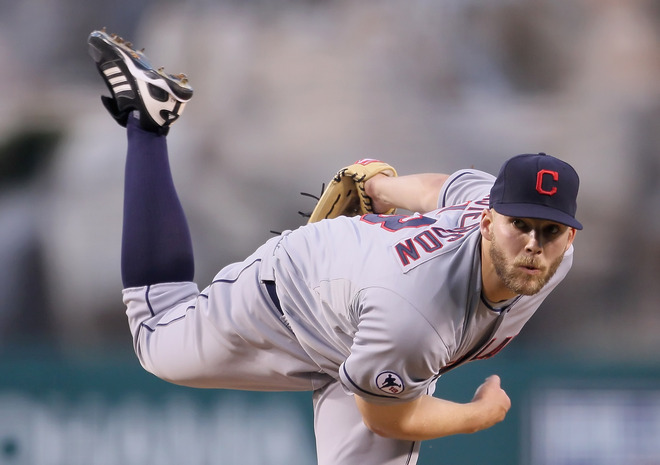 Masterson was the first topic addressed by Danny Knobler of CBSSports.com, who passed along what some scouts are saying about Masterson and the rest of the pitching staff in a small piece that’s probably worth your time. Regardless, the comments from scouts about this allegedly unsustainable pitching stand out as Knobler passes along the opinion of the scouts thusly:
Masterson was the first topic addressed by Danny Knobler of CBSSports.com, who passed along what some scouts are saying about Masterson and the rest of the pitching staff in a small piece that’s probably worth your time. Regardless, the comments from scouts about this allegedly unsustainable pitching stand out as Knobler passes along the opinion of the scouts thusly:
Justin Masterson is better than he was, Josh Tomlin is better than you think, and Alex White can be a difference-maker. Masterson started 0-5 last year. He’s 5-0 this year. Scouts say he could be even better if he would consistently use his sinker against left-handed hitters, who are still hitting .295 against him. Tomlin is 4-0, and on the way to living up to one scout’s spring training prediction that he would win more games than Fausto Carmona or Carlos Carrasco.
As for White, the 2009 No. 1 draft pick who debuted Saturday against the Tigers, one scout called him “the real deal.” Told that the Indians actually think 2010 first-rounder Drew Pomeranz will be better than White, the scout said, “Well, then they’ll have two top-of-the-rotation guys.” White only joined the rotation because both Mitch Talbot and Carrasco are hurt, but this scout predicted that there’s no way the Indians can send him back to the minor leagues now. “They’ll just have to pay him,” he said. “They ought to sign him to a long-term deal right now.”
Knobler’s piece goes on to praise the work of Tim Belcher and for now, just forget that whole “they’ll just have to pay him…they ought to sign him to a long-term deal right now” comment on Al White from a scout (obviously not very well-versed in contract negotiations or service time) as Dr. James Andrews might have some insight into how easy it is to project the health of a 22-year-old pitcher.
Regardless of that throwaway line that is predictably incendiary, look through that paragraph again about the current pitchers (and the ones still to come) and realize that the names that are hyped up in that piece are Masterson, Tomlin, White (who just went toe-to-toe with Jared Weaver), and Pomeranz. That does not include Carmona and Carrasco, who constituted the #1 and #2 starters on the team just one month ago.
That being said, do you know what will be interesting with this rotation going forward?
How the Indians manage these young arms in terms of whether they’re willing to go through the growing pains of a pitcher like a Jeanmar Gomez or their willingness to even re-introduce Dave Huff into the Cleveland rotation, given where the team is and where it looks to be going.
By that I mean that if they’re willing to live through the maturation process of young arms at the MLB level, I assume that they’d prefer to go through growing pains of Al White or Zach McAllister (3.09 ERA, 1.12 WHIP, 21 K to 5 BB in 32 IP) instead of a Gomez or Huff, who don’t figure into the long-term plans as obviously. When Carrasco comes back (and that will be soon), is there any doubt that Gomez is the one to draw the short straw?
Back to that idea that the Indians are giving higher-ceiling players an earlier chance though, given that White is already topside and McAllister is already on the 40-man roster, that evolution that we’ve been talking about (to a new group of young players to augment the parent club that represent upgrades over Huff, Gomez, Crowe, Laffey, Gimenez, etc.), would seem to be the path that the Indians have chosen and are likely to choose.
As a quick aside here, did you know that there are now 11 starting pitchers on the 40-man roster and that doesn’t include Hector Rondon?
If the Indians need some 40-man space sometime soon, don’t be surprised if one of those 11 find themselves going the way of Jess Todd (and I don’t mean to the Bronx) and Jensen Lewis.
Regardless, back to the matter on this new “reality” setting in that the Indians are closer to “real” than not, B-Pro’s Stephen Goldman includes the Tribe while asking himself what is real and not in the early going, coming to these conclusions on the Tribe:
The Indians aren’t going to win 110 games, but even if they play close to .500 the rest of the way, they could hold on to this sad sack division.
--snip--
Is It Really, Really Real? I’m going to say Sizemore, Brantley, and LaPorta (fingers crossed) yes, Hannahan and Cabrera no, and Hafner somewhere in between—cooler but still valuable. Perhaps Shin-Soo Choo will get hot and Carlos Santana will remember how to hit by the time the Indians have to start paying back some of the outs these guys have put off making.
While that first “prediction” (they “aren’t going to win 110 games) is hardly a prediction at all, if Sizemore, Brantley, and LaPorta are “for real” and Choo and Santana “remember how to hit” (although that’s an overplayed angle) and Hafner is “still valuable”…counting on my fingers real fast here, isn’t that 66% of the lineup that could be serious contributors this year?
For whatever reason Asdrubal isn’t mentioned, but going further, don’t the two positions that are currently manned by players that Goldman has targeted as not being “real” (3B and 2B) happen to be the ones where the Indians are flush with upper-level talent in The Chiz, Kipnis, Cord Phelps, and even the now often forgotten Jason Donald?
As for that notion that the Indians “won’t win 110 games”, there seems to be this growing idea that the Tribe will “regress to the mean” and end up as a .500 club when it’s all said and done. Maybe that still happens, but as WFNY’s Jon Steiner said in this week’s “Smoke Signals”, a “regression to the mean” doesn’t necessarily equate to the idea that the Indians are going to balance out to go 59-71 from here on out to finish with a .500 or sub-.500 record.
If most people thought that the team would play somewhere around .500 baseball when the season started, THAT .500 mark is the “mean” and “regressing” to it means that the Indians would play .500 from here on out. To put that another way, the 22 wins that the Indians have tallied are already on the books and if they “regress to the mean”, that doesn’t mean that those wins (that cannot be taken away) will be balanced out by losses. Instead, it simply asserts that the current winning percentage is unsustainable (and, yeah, a winning percentage close to .700 is unsustainable) and the Indians will begin to win at a clip that most predicted for them at some point.
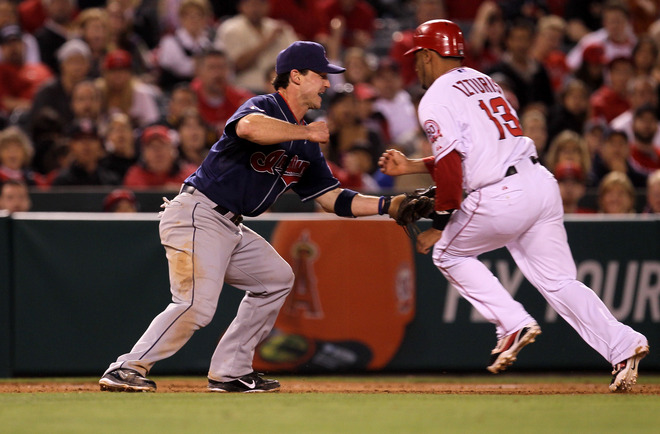 When that point comes remains to be seen, but if they simply play .500 baseball from here on out, the Indians finish the season with a 87-75 record.
When that point comes remains to be seen, but if they simply play .500 baseball from here on out, the Indians finish the season with a 87-75 record.
Now, what does that mean in the context of the rest of the Central?
Well, if the Baseball Prospectus’ Playoff Odds offers any insight (and it has the Indians winning at only a .461 clip for the rest of the year), it still puts the Indians as the odds-on favorite to take the division on the strength of their start and those wins that are already tallied.
That all said, if we’re sitting here today looking at a new “reality” that the Indians are a good baseball team, regardless of the idea that they aren’t going to finish with 110 wins, what I’m looking forward to is the day when we stop looking at those playoff odds and seeing the Indians’ projected winning percentage under .500 while remaining scared that some other AL Central team is about to throw it into another gear and start climbing the standings. Maybe that day still comes (it still is early May), but in this week alone there were multiple articles from a variety of sources suggesting that the trio of pre-season AL Central favorites have dug themselves a hole that they won’t be able to climb out of.
Starting off, there was a piece in the current print edition of SI from Joe Sheehan, wherein which Sheehan opines on the 12-19 Twins (who have scored the fewest runs in MLB and have allowed the 3rd most runs in MLB to date) that:
It’s not out of the question that this team can turn things around, but the talent on hand, the injury concerns, and the lack of flexibility to add players (the Twins have their highest payroll ever) are roadblocks…While the Twins started 2011 focused on the present, it may be time to take a good long look at the future.
Everyone realizes that Alfonso Soriano has 3 fewer HR than the Twins’ TEAM after more than 30 games into the season, right?
Their TEAM OBP is .296 and their TEAM SLG is .328 and on the “strength of that”, it is May 8th and it now officially has been suggested that the “model organization of how to do things right” that we’ve had battered over our heads locally – those pesky Minnesota Twins – “take a good long look at the future” instead of focusing on the present.
How does that shoe fit, Minnesota?
It’s been a little uncomfortable on our foot for the last few years, so sorry if we’re going to have a little difficulty drumming up a lot of sympathy for a team undone by injuries/regressions to their main players (some of whom are under contract for a LONG time) and a supporting cast that has underwhelmed…because we’ve had our fill on the North Coast since 2008.
As for the other team that most assumed to be neck and neck with the Twins for the AL Central lead, it is worth noting that the White Sox have the worst record in baseball…and the team with the 2nd worst record (ahem, the Twins) isn’t really all that close to matching the White Sox in terms of ineptitude. While it’s true that the White Sox are a streaky team that could suddenly vault themselves back into relevance by getting hot for a couple of weeks, let’s go back a couple of months to some words uttered by the White Sox owner in terms of payroll, performance, and (most importantly) attendance.
You ready for this?
Here’s White Sox owner Jerry Reinsdorf on the White Sox “going for it” in 2011 in terms of adding payroll and how it was predicated on the White Sox being a good team and a great draw on the South Side:
The Sox payroll has been increased almost $15 million over last year’s $110 million allotment, and Reinsdorf said it was still too early to tell if the high-profile pickups will increase revenue this season.
“We’ve really taken a chance,” Reinsdorf said. “We’ve really stuck our necks out. If this team bombs and we draw 2.2 million people again, we are going to lose a lot of money. We are betting that we’re going to be good.”
After that, how about more from Reinsdorf a few weeks after that story:
“We’ve really taken a chance,” Reinsdorf said on ESPN 1000’s “Talking Baseball.” “The term all-in I think really makes some sense here. If we draw what we drew last year, we will lose a lot of money. We decided to make a bet that if we put this team together the way we have, that it’ll contend and that people will come out and support it. Otherwise, we are definitely going to lose money. Fortunately over the years we’ve made a little here, we’ve made a little there and we can cover it if we lose. We won’t be able to lose money two years in a row.”
Just before the start of the season, Reinsdorf went on the record that the “the team would need to draw between 2.6 million and 2.8 million fans to pay for the club’s souped-up $125 million-plus payroll”. If we may, let’s fast-forward a month now to where we sit today as the White Sox have now played 20% of their home games and are averaging about 22,000 fans a game, about 1/3 of where they need in terms of per-game average attendance to be to hit “between 2.6 million and 2.8 million” mark that won’t result in a loss of “a lot of money” for the team. Fully realizing that attendance increases as summer progresses, the White Sox are currently on pace for 1.8 million in attendance and need to AVERAGE 36,000 fans from here on out to hit 2.7 million (splitting the difference of their goal) in attendance for 2011. For some context on that, the 2006 Pale Hose (fresh off of a WS victory) averaged 36,511 for the season with the White Sox not sniffing that amount since.
Now consider that the White Sox are 12-22, already 11 games back in the Central now just one week into the month of May. Further, their pitching staff has allowed the MOST runs in the AL and their offense has scored the 5th FEWEST runs in the AL.
Remember where the Twins ranked in those categories?
Yep, now entering the 2nd week of May, the Twins have scored the fewest runs in all of MLB and the White Sox have allowed the most runs in all of MLB and the other side of each team’s equation doesn’t exactly make up for those glaring weaknesses.
Regardless (and back to the South Side), given where the White Sox sit and that they don’t look to be coming out of this funk anytime soon, in terms of performance OR (perhaps more importantly) attendance, it is worth remembering what happened back on the final day of July in 1997 when the infamous “White Flag Trade” was consummated by Chicago at the direction of…wait for it…Mr. Jerry Reinsdorf. Realizing that it is still early, with what Reinsdorf went on the record about regarding attendance and where the White Sox sit, anyone want to take a guess who might be seen as “sellers” at the Trade Deadline?
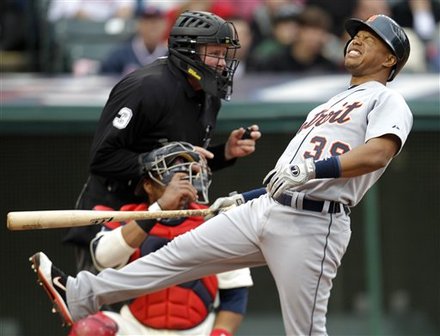 As for the third team that was purported to be an AL Central contender when the season started, the Tigers climbed back to within 2 games of .500 with Verlander’s no-no, but remain at the bottom of the league in terms of runs allowed and have THREE regulars with an OPS+ over 100. Granted, one of those players is the otherworldly Miggy Cabrera, but as Jayson Stark points out in his look at whether the AL Central is going to keep going the way it has, he asserts that “way too many players they were counting on have been huge disappointments so far”, specifically mentioning Magglio, Austin Jackson, Brad Penny, and Joaquin Benoit. Here’s the thing about that…these players have been disappointing for sure, but is that “disappointment” tied into the FA dollars that were thrown at them in the off-season or does that “disappointment” come from what was legitimately expected of them?
As for the third team that was purported to be an AL Central contender when the season started, the Tigers climbed back to within 2 games of .500 with Verlander’s no-no, but remain at the bottom of the league in terms of runs allowed and have THREE regulars with an OPS+ over 100. Granted, one of those players is the otherworldly Miggy Cabrera, but as Jayson Stark points out in his look at whether the AL Central is going to keep going the way it has, he asserts that “way too many players they were counting on have been huge disappointments so far”, specifically mentioning Magglio, Austin Jackson, Brad Penny, and Joaquin Benoit. Here’s the thing about that…these players have been disappointing for sure, but is that “disappointment” tied into the FA dollars that were thrown at them in the off-season or does that “disappointment” come from what was legitimately expected of them?
By that I mean that the Tigers gave Magglio a 1-year, $10M deal, Victor a 4-year, $50M contract, and Benoit a 3-year, $16.5M deal with the idea that each would continue to experience their success from 2010 and their recent past, but they’re counting on a 37-year-old Magglio and a 32-year-old Victor (who’s already hit the DL) to provide protection for Miggy while ignoring the fact that Benoit’s 2010 season could have been an aberration by giving him a THREE-year deal when he was a non-roster invitee the previous Spring for the Rays.
Maybe Miggy and Verlander can carry them, but the Tigers’ back-end of the rotation is horrible and their bullpen is worse and there isn’t anyone ready to ascend from the farm to save either group. While it is possible that Austin Jackson, Scherzer, and Porcello (most notably) make great strides to fulfilling their potential this year, the Tigers look top-heavy and old in too many places to think that extended DL stints (like the one Victor is just coming off of) aren’t going to expose their lack of depth in crucial places.
If you’re keeping score at home, that’s one call for the Twins to “take a good long look at the future” from the respected Joe Sheehan of SI, a White Sox team that needed to draw about 2.7M fans to break-even with the possibility that they miss that mark by…oh, about 1M fans with an owner that has a history of making decisions based on financial realities, and a Tigers team that boasts two of the best players in MLB and a number of underachieving youngsters and over-the-hill veterans.
Which brings us to the 2nd place team in the Central as the Royals made some waves this week by calling up top prospect Eric Hosmer. While the timing of move certainly sent the message that the Royals are ready to press fast-forward on the video that puts them as a contender in the Central because of their young talent, what remains in most places on the KC roster is a group of players that (unlike the 2011 Indians) are overachieving veterans who are playing over their heads. While the Indians boast Carmona, Masterson, and (gulp) Tomlin, 60% of the Royals rotation still consists of Bruce Chen, Kyle Davies, and Jeff Francis.
Certainly, the Royals have more young talent coming, but any young talent is prone to growing pains…remember the 2nd half of 2009 and the 1st half of 2010 with a group of highly-regarded prospects?
Maybe Eric Hosmer (#8 rated prospect prior to 2011 via MLB.com, AAA OPS of 1.107) arrives and bashes his way through the AL, but Matt LaPorta (#14 rated prospect prior to 2009 via MLB.com, .947 career AAA OPS) didn’t and while I realize that age plays a role here (Hosmer is only 21), the transition from the current group of Royals to the future group of Royals doesn’t figure to be as seamless as some might have thought when Hosmer got the call from Omaha. Looking past the whole idea that the Royals just upped Hosmer’s price tag by calling him up now instead of in two or three weeks, it seems as if the Royals are flush with young talent that figures to arrive throughout this season and next with Hosmer representing the first glimpse of their future.
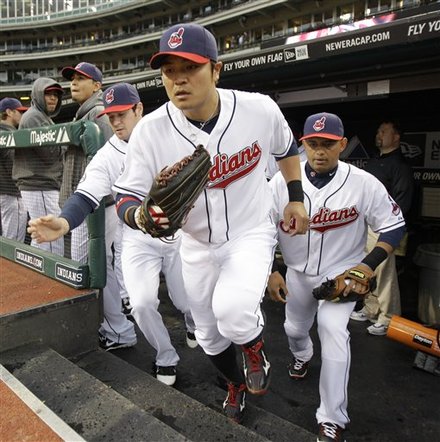 Going into the season, the thought was that the Indians and Royals had the talent to contend for the AL Central…just not until 2012, or more likely 2013. As we sit here, at the beginning of May, with those two teams sitting at the top of the division, with the assumed frontrunners showing their warts (that aren’t just skin-deep), it’s worth asking the very query posed by Scott Bricker (and click this again because it’s so good) in terms of the Indians of 2011 and “what if tomorrow is today?”
Going into the season, the thought was that the Indians and Royals had the talent to contend for the AL Central…just not until 2012, or more likely 2013. As we sit here, at the beginning of May, with those two teams sitting at the top of the division, with the assumed frontrunners showing their warts (that aren’t just skin-deep), it’s worth asking the very query posed by Scott Bricker (and click this again because it’s so good) in terms of the Indians of 2011 and “what if tomorrow is today?”
What if the assumed contenders for 2012 or 2013 have matured into units that can contend for the AL Central in 2011?
With each passing game and series and week and month, it’s time to accept that a new “reality” has arrived on the North Coast and while it’s not the one that was expected when the Tribe got off to their hot start, perhaps a pleasant unexpected surprise is overdue for Cleveland.
The “reality” that needs be accepted is that the 2011 Indians are for real as contenders in the AL Central, and that this newfound “reality” is not one that’s going away anytime soon.
- NBA Announces 2013-2014 Schedule
- Browns Ink Sharknado
- Sharknado A No-Show For Rookie Camp
- Trent Richardson Out Until Training Camp
- Browns Sign Brandon Jackson
- Carrasco Suspended Eight Games
- Browns Add to Wide Receiver Depth with David Nelson
- Browns Need to Learn from Past Draft Mistakes
- Browns Release Chris Gocong and Usama Young
- Browns Missing on Grimes Disappointing, But Not The End
The TCF Forums
- Chris Grant's first 3 drafts
Kingpin74 (Tuesday, January 21 2014 10:13 AM) - The 2014 Offseason Thread
googleeph2 (Tuesday, January 21 2014 9:36 AM) - 2015 Recruiting
furls (Tuesday, January 21 2014 6:57 AM) - Mike Brown
YahooFanChicago (Monday, January 20 2014 11:15 PM) - Movies coming out
HoodooMan (Monday, January 20 2014 9:34 PM) - 2014 Hoops Hockey Hijinx
jpd1224 (Monday, January 20 2014 4:44 PM) - 2014 Recruiting
jclvd_23 (Monday, January 20 2014 2:26 PM) - Wish List - #4 Pick
Hikohadon (Monday, January 20 2014 1:26 PM) - Official- Browns Coach Search/Rumors
OldDawg (Sunday, January 19 2014 6:48 PM) - #1 overall pick Anthony Bennett
TouchEmAllTime (Sunday, January 19 2014 1:28 PM)


